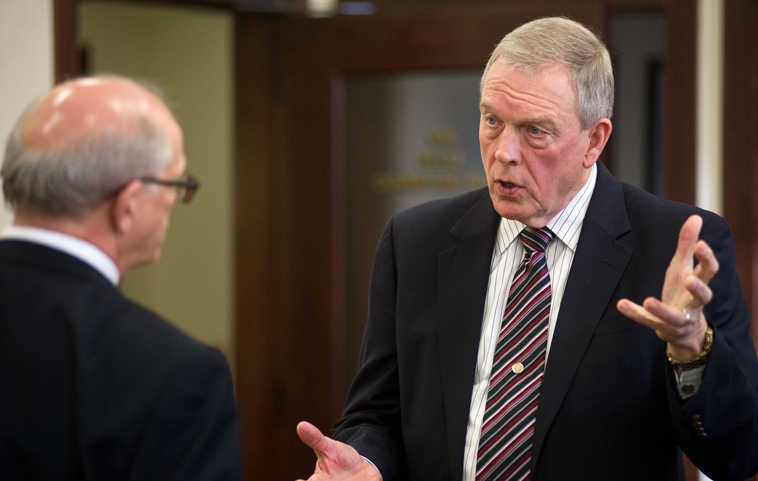JUNEAU — University of Alaska President Pat Gamble told the Senate Judiciary Committee on Wednesday a bill permitting concealed handguns on campus is unacceptable.
Gamble said the Board of Regents is very satisfied with the current firearms policy it has, which only allows firearms on campus if they are locked in vehicles.
The original version of the bill that would have allowed people to carry concealed firearms on university system campuses. After initial concern was raised, sponsor Sen. John Coghill, R-North Pole, introduced a draft rewrite of SB176.
In the new version, possession of firearms on University of Alaska campuses would be limited to those at least 21 years old who hold a concealed handgun permit. It also would allow for someone legally permitted to possess a concealed handgun to do so in student housing on university property, provided the person provides proof of the permit and keeps the gun in a lockbox when the gun isn’t concealed and within the person’s immediate control. Qualifications for a permit include successful completion of a handgun course.
Sen. Fred Dyson, R-Eagle River, said the language of the bill involving lock boxes needed to be more defining in description with the lock box bolted down and cannot be forcibly opened with a knife. He also said the bill needs to include long guns as well.
The bill was revised by Coghill’s staff to find common ground with university safety concerns. Coghill’s staff told the committee they had worked closely with university representatives on the bill’s rewrite.
While he opposed the original version of the bill, Gamble said he was at least impressed by its focus on fundamental rights.
“But now we came off fundamental rights to a compromise, and I am now confused with what the argument is,” he said.
He said he felt the current version of the bill is now about who is winning points, and said everything he sees in the bill has real world downside potential.
He pointed to recent studies show the University of Alaska campus is one of the safest places to be in Alaska, and worries the bill would change that.
“We don’t deal with the hypothetical,” said Gamble, who also has raised concerns about allowing guns on campuses because of child care centers and a constant string of visiting K-12 students. “We deal with possibilities.”
Gamble said he could not go along with the idea university campuses would be safer with more handguns.
“I don’t think citizens check their rights at the university door,” Coghill responded.
Gamble said he was receiving letters from people saying they plan leaving the University of Alaska if the bill becomes law.
Coghill said he hopes to have the committee vote on the bill no later than Monday.

